Are you a vegetarian looking to boost your protein intake? Or perhaps you’re just interested in diversifying your protein sources for a balanced diet? Either way, you’ve come to the right place.
Contrary to popular belief, a vegetarian diet does not have to be deficient in protein. There are many vegetarian foods with lots of protein that not only meet your dietary needs, but also add a lot of flavor and nutrients to your meals.
In this guide, we’ll show you 20 high-protein vegetarian foods that are great for building muscle, and keeping you lean and healthy.
So, let’s dive in and explore these protein-packed options that can supercharge your vegetarian lifestyle.
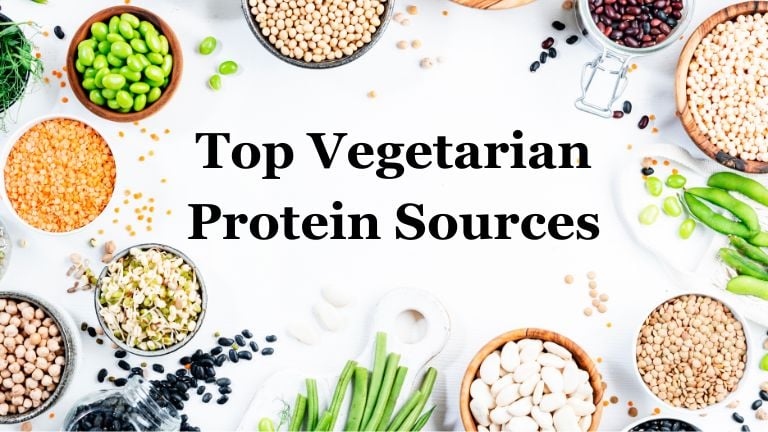
- List of High Protein Vegetarian Foods In India
- 1. Lentils
- 2. Chickpeas
- 3. Beans
- 4. Quinoa
- 5. Almonds
- 6. Tofu
- 7. Chia Seeds
- 8. Pumpkin Seeds
- 9. Peanut Butter
- 10. Soy Milk
- 11. Hemp Seeds
- 12. Green Peas
- 13. Oats
- 14. Brown Rice and Wild Rice
- 15. Edamame
- 16. Pistachios
- 17. Spirulina
- 18. Protein Rich Vegetables
- 19. Paneer
- 20. Yogurt
- Why Vegetarian Protein is Important
- 1. Building and repairing tissues
- 2. Formation of enzymes and hormones
- 3. Energy source
- 4. Immune function
- Conclusion
List of High Protein Vegetarian Foods In India
These vegetarian foods with lots of protein are delicious and healthy. They can help you get fit, eat well, and make you healthy. Learn about plant-based protein sources that can be a staple in your meat-free lifestyle, such as legumes, grains, nuts, and vegetables.
1. Lentils
Lentils are a type of legume that is high in protein, fiber, and nutrients. They are a good source of folate, potassium, and iron. Lentils are also a good source of soluble fiber, which can help to lower cholesterol levels. In addition, lentils are low in fat and calories, which can be helpful for people who want to lose weight.
A 1-cup (198-gram) serving of cooked lentils provides about 18 grams of protein. It makes them one of the best plant-based protein sources available. Lentils can be used in a variety of dishes such as soups, stews, salads, and curries, or served as a side dish.
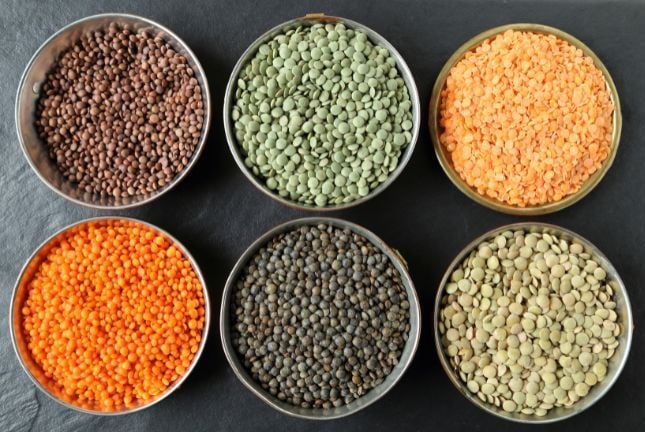
There are many different types of lentils, each with its own unique flavor and texture. Some of the most common types of lentils include:
- Brown lentils: These are the most common type of lentil. They have a mild flavor and a slightly earthy taste.
- Green lentils: These lentils have a brighter green color and a slightly nutty flavor. They are often used in salads and soups.
- Red lentils: These lentils have a reddish-brown color and a slightly sweet flavor. Dals and curries are often made with them.
- Black lentils: These lentils have a black color and a slightly earthy flavor. They are often used in Indian cuisine.
2. Chickpeas
When it comes to high-protein vegetarian foods, chickpeas, also known as garbanzo beans, are a real game-changer. These legumes are good for you because they have lots of protein. They also have many health benefits, so they’re a must-have for vegetarians and vegans.
A 1-cup (164-gram) serving of chickpeas provides about 14.5 grams of protein. Apart from being rich in protein, chickpeas are also a good source of dietary fiber, vitamins, and minerals such as iron, magnesium, and potassium.
Chickpeas also contain antioxidants, which contribute to anti-inflammatory properties and may help reduce the risk of chronic diseases. Additionally, the low glycemic index of chickpeas makes them suitable for those watching their blood sugar levels.
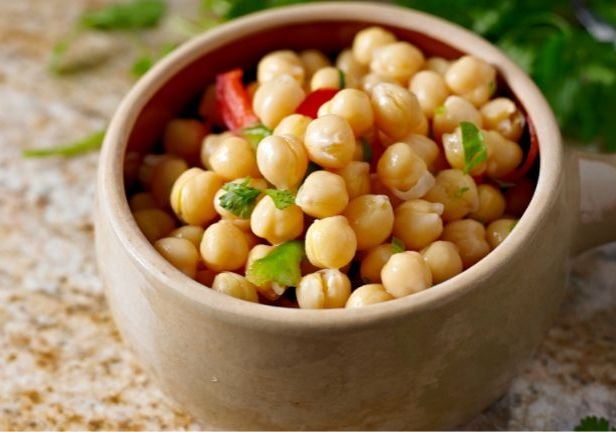
3. Beans
Beans are a cornerstone of vegetarian and vegan diets, and for good reason. They are a rich source of protein, fiber, and essential vitamins and minerals such as iron, potassium, and folate. Beans are a type of legume that are staple food in many cultures around the world.
The amount of protein in beans varies depending on their type, but you can generally expect between 14 and 18 grams of protein per cup when cooked.
Beans come in many different types, such as kidney beans, black beans, navy beans and many more.
- Black beans: Good source of protein, fiber, and iron. Additionally, they are a good source of antioxidants.
- Kidney beans: The beans are loaded with protein, dietary fiber, potassium and iron.
- Pinto beans: They are a good source of protein, fiber, potassium and magnesium.
- Soybeans: These beans are a good source of protein, fiber, and isoflavones. Isoflavones are plant compounds that have been associated with health benefits, including reducing the risk of heart disease and cancer.

4. Quinoa
Quinoa is a vegetarian food that has complete protein. Quinoa is often mistaken for a grain, but it is actually a seed that comes from the same family as spinach and beets.
One cup of cooked quinoa has 8 grams of protein, but what makes it special is its amino acid profile. Quinoa is one of the few plant-based foods that has all nine essential amino acids, making it a complete protein.
Beyond protein, quinoa is also rich in fiber, iron, magnesium, and manganese. It is gluten-free, making it an excellent option for those with gluten sensitivities or celiac disease.
Quinoa can be substituted for rice, oats, or couscous in recipes. It can be used in a variety of dishes such as salads, soups, stews, and curries, or served as a side dish. It is easy to prepare and can be prepared on the stovetop or in the rice cooker.

5. Almonds
When you think of high-protein foods, almonds should be on your radar. Nuts are not only a tasty and crunchy snack, they’re also loaded with high-quality protein., vitamins and minerals. 1-ounce (28-gram) serving of almonds provides about 6 grams of protein.
Almonds are a good source of protein, which is essential for building and repairing tissues. Their fiber content helps regulate digestion and improves cardiovascular health. Almonds are also a good source of healthy fats, which may help lower cholesterol and prevent heart disease. You can add them to your diet in many different ways. Try the one that works for you.
- They can be eaten raw, roasted, or added to snacks, desserts, and laddus.
- You can also make almond milk, almond butter, and almond flour.
- Many different types of smoothies can be made with almonds and almond milk.

6. Tofu
Tofu, also known as bean curd, is food made from coagulating soy milk and pressing the resulting curds into solid white blocks of varying softness
It has been a favorite of vegetarians and vegans for a long time because of its high protein content and versatility. It is also a good source of nutrients like calcium, iron, and magnesium. It is a great option for people who don’t like gluten, lactose, or just don’t like eating meat.
1-cup (252-gram) serving of raw firm tofu provides about 20 grams of protein. It is a complete protein, which means that it has all nine essential amino acids that our bodies can’t make on their own.
There are many ways to add tofu to your diet.
- Cook tofu, including baking, frying, and sautéing.
- Tofu can be used in many different dishes like stir-fries, soups, and curries.
- It can also be added to smoothies and desserts.
- The tofu can also be eaten raw.
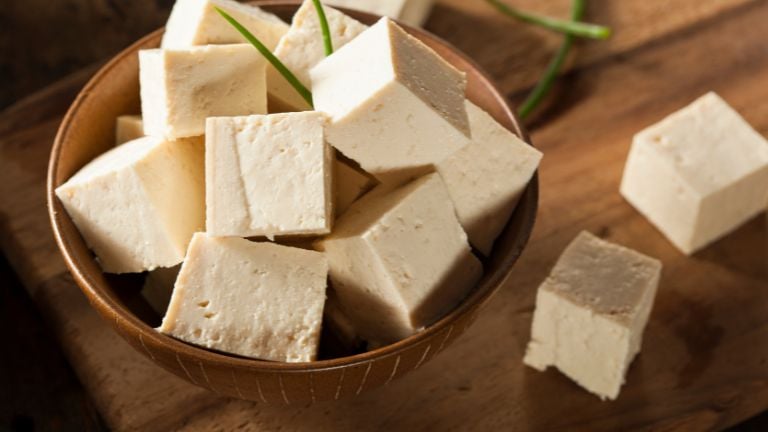
7. Chia Seeds
Don’t be fooled by their small size; chia seeds are a nutritional powerhouse, especially when it comes to protein. These small, black seeds have become a superfood over the years. Health enthusiasts and vegetarians love them.
Two tablespoons of chia seeds have about 4 grams of protein. This may not seem like a lot, but it’s a lot more than other sources. They are loaded with other nutrients like omega-3 fatty acids, fiber, antioxidants, calcium, and magnesium.
Chia seeds can be eaten raw or cooked. They can be added to smoothies, yogurt, oatmeal, or salads. You can use them to make chia pudding, which is a healthy and nutritious breakfast or snack.
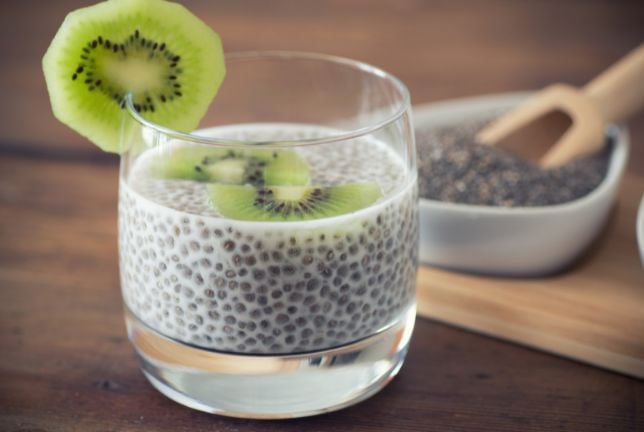
8. Pumpkin Seeds
Pumpkin seeds are the edible seeds of the pumpkin fruit. They are a good source of protein, fiber, and healthy fats. The pumpkin seed is also a good source of vitamins and minerals, including magnesium, phosphorus, and zinc.
Pumpkin seeds are particularly high in magnesium, which is vital for a variety of bodily functions including muscle and nerve function, blood sugar control, and bone health. They are also full of antioxidants and other nutrients that can help prevent or treat health conditions like heart disease, diabetes, and cancer.
When it comes to protein, pumpkin seeds pack a punch. Just one ounce (about 28 grams) provides around 7 grams of protein. Pumpkin seeds can be eaten raw or roasted as a snack, added to sweet or savoury dishes.

9. Peanut Butter
Peanut butter is a timeless favorite that is found in households across the globe. For vegetarians, it’s more than just a tasty spread. It’s got a lot of good stuff in it, like a lot of protein, vitamins, and minerals. It also has antioxidants like resveratrol, which has been linked to many health benefits.
Two tablespoons of peanut butter provide approximately 8 grams of protein. It is a convenient and delicious way to meet your protein needs. Besides protein, peanut butter is rich in essential nutrients, such as healthy fats, particularly monounsaturated fats that are heart-healthy.
Peanut butter is typically used as a spread on bread, toast, or crackers, and in sandwiches. It is also used in a variety of breakfast dishes and desserts, such as Granada, smoothies, cookies, and brownies.
However, it is important to check the label when buying peanut butter, as many brands add ingredients such as sugar, vegetable oil, and trans fats.
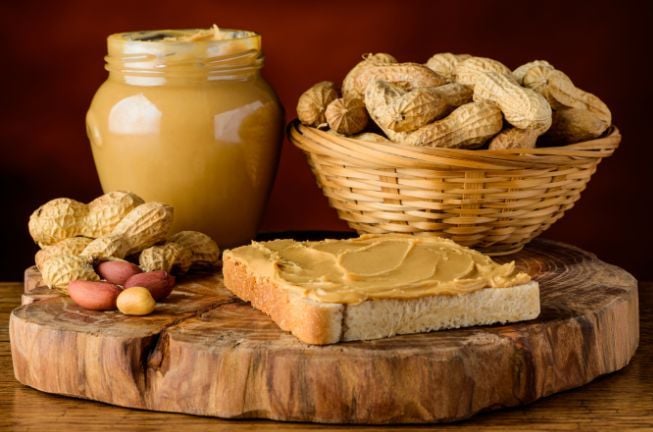
10. Soy Milk
Soy milk has carved out its space as a popular dairy alternative, especially among vegetarians, vegans, and those who are lactose intolerant. It is made from soybeans that are soaked, ground, and filtered to produce a smooth, milk-like liquid.
A 1-cup (240-ml) serving of unsweetened soy milk provides about 7 grams of protein. In addition to protein, soy milk offers a range of vitamins and minerals, including calcium and vitamin D, which are often fortified to levels comparable to those found in cow’s milk.
Soy milk can be used in a variety of dishes such as smoothies, cereal, coffee, and tea, or used as a substitute for cow’s milk in recipes. You can find it in many grocery stores and health food stores. It comes in different flavors, like sweetened, unsweetened, and flavored.
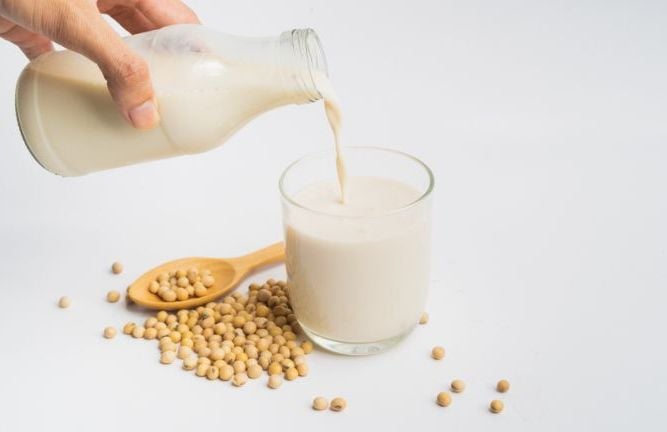
11. Hemp Seeds
Hemp seeds are an easy way for vegetarians to add plant-based protein to their diet. Hemp seeds are small, brown seeds that come from the Cannabis sativa plant.
A 3-tablespoons of hemp seeds provides 10 grams of complete, highly digestible protein. They’re packed with all nine essential amino acids, making them a complete protein source. These seeds are also rich in essential fatty acids, specifically omega-3 and omega-6.
Hemp seeds may not be as commonly found on grocery store shelves as other seeds like chia or flax, but they’re high protein content and nutritional profile.
Hemp protein powder is also available, which is an excellent plant-based, vegan protein powder that supplies omega-3s, essential amino acids, magnesium, and iron.
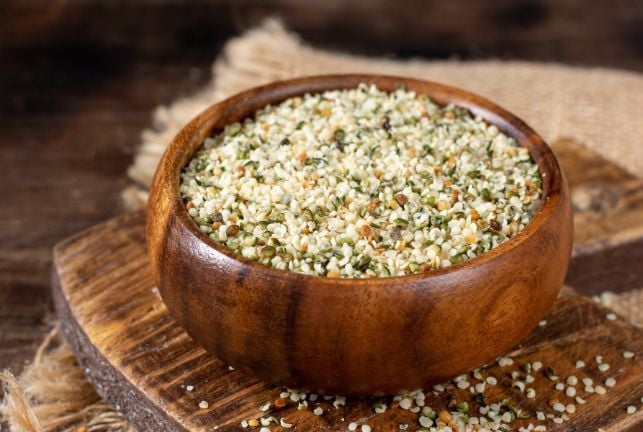
12. Green Peas
Peas are a type of legume that is widely consumed as a vegetable. These little green spheres are not just fillers; they pack a nutritional punch that goes beyond their small size.
A cup of cooked green peas contains approximately 8-9 grams of protein. They are also an excellent source of fiber, vitamins C, K, folate, manganese and more.
Green peas can be used in a variety of dishes such as soups, stews, salads, and curries, or served as a side dish. It comes in a variety of forms, such as fresh, frozen, and canned.
Pea protein is becoming more popular in the fitness world, especially among vegetarians and vegans. Extracted from yellow peas, this plant-based protein offers around 20-25 grams of protein per serving, rivaling traditional animal-based protein sources.
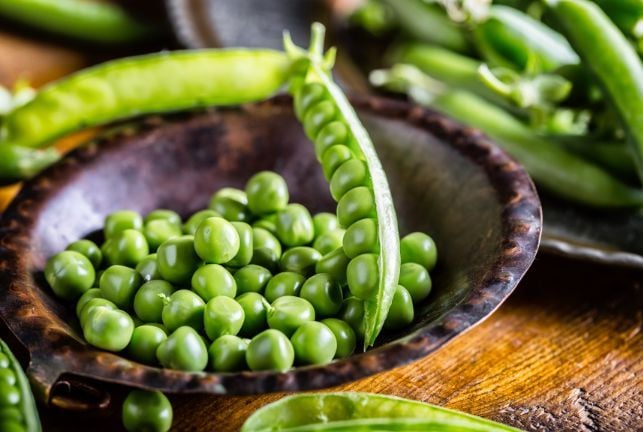
13. Oats
When it comes to nutritious breakfast options, oats often top the list. Many people start their day with a warm bowl of oatmeal. It contains a lot of protein, which is especially beneficial to vegetarians.
One cup of cooked oats provides about 6 grams of protein. Although oatmeal is not a complete protein, pairing them with milk or yogurt can help you achieve a full amino acid profile.
Besides protein, oats are rich in essential nutrients like fiber, which aids in digestion and helps lower cholesterol. In a study it has been found that beta-glucan, the main type of soluble fiber in oats, helps slow digestion, increase satiety, and suppress appetite.
They are also a good source of antioxidants, vitamins, and minerals like manganese, phosphorus, and iron.
Oats can be used in a variety of dishes such as oatmeal, granola, and baked goods, or added to smoothies and yogurt bowls. Oats are available in a variety of forms, including rolled oats, steel-cut oats, and instant oats.
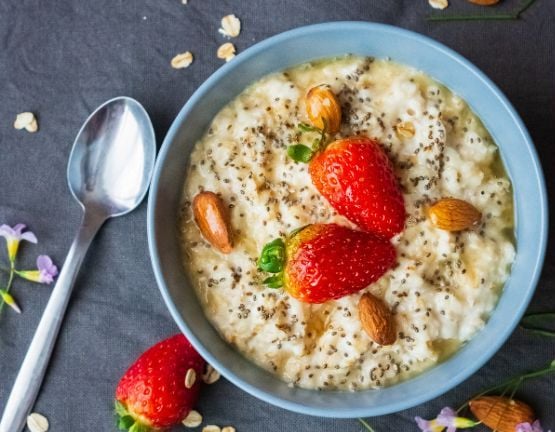
14. Brown Rice and Wild Rice
White rice is often the main ingredient in many dishes, but brown rice, which is less processed, offers a higher nutritional value. Brown rice is a whole grain that contains all parts of the grain, including bran, germ, and endosperm.
One cooked cup of brown rice provides about 5 grams of protein. Combine brown rice with legumes like beans or lentils and you will have a complete vegetarian protein source. The combination provides all nine essential amino acids.
Wild rice contains approximately 1.5 times as much protein as other long-grain rice varieties, including brown rice.
Brown rice alone won’t meet your protein needs, but incorporating it along with other vegetarian protein sources will help boost your intake. Its nutritional benefits make it a healthy addition to a plant-based diet.
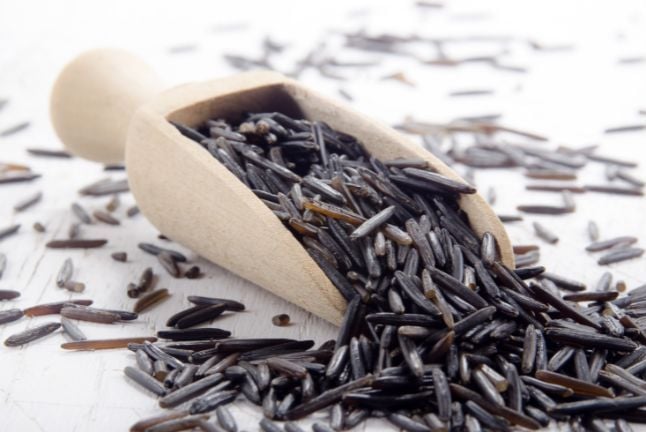
15. Edamame
Edamame are immature soybeans that are harvested when they are still green and tender. They are a good source of protein from plants. It has about 8 grams of protein per 1/2 cup.
Pair edamame with whole grains to get a complete protein profile with all essential amino acids. They can be used in a variety of dishes such as salads, soups, and stir-fries, or served as a snack.
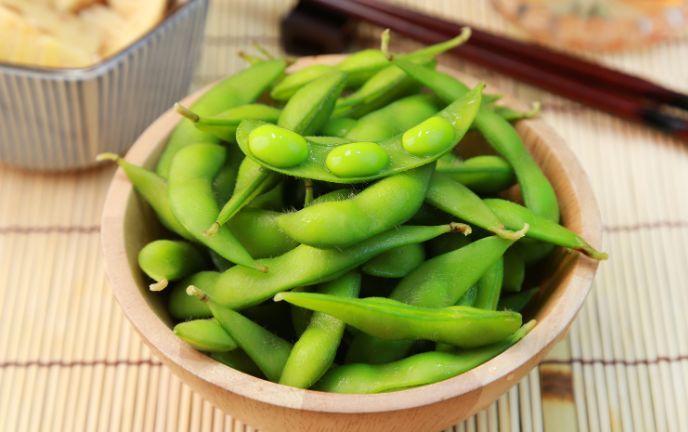
16. Pistachios
Pistachios are one of the best nuts to snack on because they are delicious and have a lot of protein. They are an excellent choice for vegetarians looking to diversify their sources of protein, all while enjoying a tasty snack.
One ounce of pistachios (about 49 kernels) contains 6 grams of protein. They are also a source of other nutrients such as fiber, healthy fats, vitamin B6, and potassium.
Pistachios can be eaten raw or roasted as a snack, added to sweet or savory dishes, or used to make pistachio butter, paste, or milk.
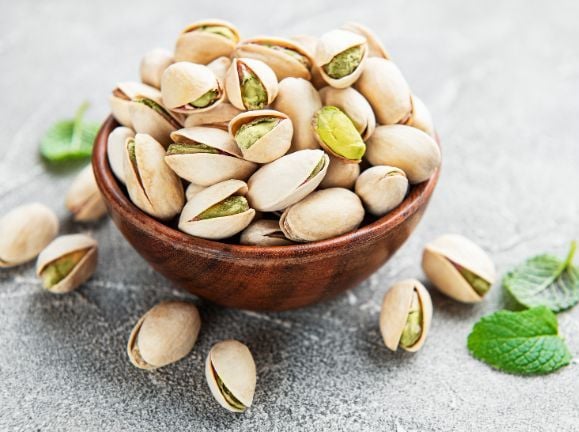
17. Spirulina
When you think of sources of protein, algae probably isn’t the first thing that comes to mind. But spirulina, a type of blue-green algae, is becoming more and more popular as a protein source.
Spirulina is exceptionally high in protein, with a protein content of about 60-70% by dry weight. Just one tablespoon of spirulina powder can provide around 4 grams of protein.
Spirulina can be consumed in a variety of forms, including tablets, capsules, powders, and flakes, and can be added to smoothies, juices, and other foods.

18. Protein Rich Vegetables
When we think of high-protein foods, meat or legumes often come to mind first. However, vegetables can also provide significant amounts of protein, and should not be overlooked.
- Spinach: This leafy green is not just rich in iron but also provides about 5 grams of protein per cooked cup.
- Broccoli: A cup of cooked broccoli offers approximately 4 grams of protein and is also high in vitamins C and K.
- Asparagus: Known for its unique flavor, asparagus provides almost 3 grams of protein per cooked cup.
- Brussels Sprouts: These mini cabbages pack about 4 grams of protein per cooked cup.
- Sweet Corn: Enjoy it grilled or boiled; one cup offers around 4.2 grams of protein.
- Artichokes: These offer up to 4.8 grams of protein per cooked artichoke.
- Avocado: Although mainly known for healthy fats, one cup of avocado also provides 4.6 grams of protein.
- Green Peas: Green peas offer more protein than most vegetables, with a whopping 8.6 grams per cooked cup.
- Kale: This trendy superfood offers around 3.5 grams of protein per cooked cup.
- Mushrooms: Provide around 4 grams per cooked cup.

19. Paneer
Paneer, a fresh cheese that is common in South Asian cuisine, especially Indian cuisine. It is a favorite ingredient for many vegetarians. It is made from full-fat buffalo milk or cow milk. This cheese is made by curdling milk and doesn’t harden. It doesn’t age and doesn’t melt. If you eat dairy, paneer is a good way to get protein into your diet.
A 100-gram serving of paneer can offer around 14 grams of protein. It is also a good source of calcium, contributing to bone health. It also contains other essential nutrients like vitamin B12, which is often challenging to find in plant-based foods.
White cheese that is often used in savoury dishes like curries, tikka masala, and biryani. Paneer can be eaten raw or used in desserts. It is also used in popular dishes like palak paneer (spinach and paneer curry) and matar paneer (peas and paneer curry).
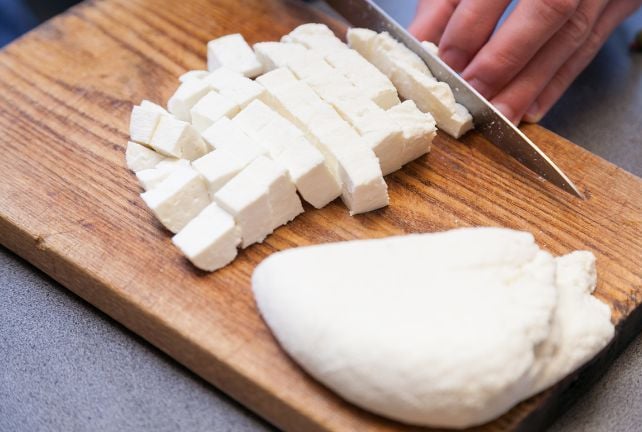
20. Yogurt
Yogurt is a dairy product made by fermenting milk with a bacterial yogurt culture. The protein and probiotics in yogurt may help promote fullness, aid digestion, and boost the immune system.
A 1-cup (245-gram) serving of plain, low-fat yogurt provides about 13 grams of protein. Yogurt is also an excellent source of calcium, important for bone health, and probiotics, beneficial for gut health. It also contains essential nutrients like vitamin B12, which are often difficult for vegetarians to obtain from plant-based foods.
It’s easy to find in most grocery stores and health food stores. It comes in a variety of flavors and varieties, including Greek yogurt, which provides more protein and less sugar than regular yogurt.
Yogurt can be enjoyed on its own, in smoothies, with fruit and granola, mixed into oatmeal, or as a snack or sour cream substitute.

Why Vegetarian Protein is Important
Protein is an essential macronutrient that plays many vital roles in the body:
1. Building and repairing tissues
Protein provides the amino acids needed to build new tissues in the body, as well as maintain and repair existing tissues. It is a structural component of muscle, skin, hair, and nails.
2. Formation of enzymes and hormones
Many enzymes and hormones in the body are made up of proteins. These help regulate reactions in the body and control things like metabolism, tissue function, and growth.
3. Energy source
When carbohydrates are in short supply, protein can also be used for fuel. The body breaks down protein into amino acids and can convert these amino acids into glucose to provide the body with energy.
4. Immune function
Many proteins play important roles in immunity and transportation of nutrients and oxygen in the blood. Antibodies, for example, are immune proteins that help destroy foreign invaders.
It is important to get enough protein as a vegetarian to maintain the structure and function of the body. A daily intake of 0.8-1 gram of protein per kilogram of body weight is recommended. Even though, endurance athletes or people who are very active may need a bit more. Consuming a variety of plant-based protein sources can help vegetarians meet this need.
Conclusion
As we’ve explored, vegetarians and vegans have a plethora of high-protein food options to choose from. From legumes like lentils and chickpeas to almonds and pistachios to spirulina, the plant kingdom has a lot of protein sources to meet your protein needs.
Let’s not forget protein-rich vegetables like green peas and broccoli, which provide additional nutritional benefits such as fiber, vitamins, and minerals.
These foods are a great place to start if you’re a vegetarian or vegan, or just want to get more plant-based protein into your diet.

Manish brings over 10 years of hands-on experience in weight lifting and fat loss to fitness coaching. He specializes in gym-based training and has a lot of knowledge about exercise, lifting technique, biomechanics, and more.
Through “Fit Life Regime,” he generously shares the insights he’s gained over a decade in the field. His goal is to equip others with the knowledge to start their own fitness journey.
